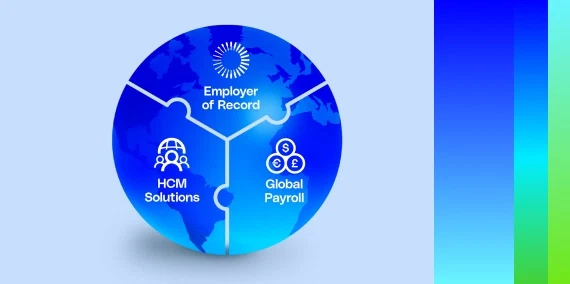Performance reviews are one of the many routine occurrences of in-person offices that seemingly dwindled as the global pandemic took hold and many employees began working remotely. However, it’s important to not let these assessments become a thing of the past.
Performance reviews keep your employees focused and on track to meet both personal and company goals. In these assessments, employees discuss important questions, such as: Where are they heading? What do they want to achieve? How can these goals help the company? Do their personal goals align with the company’s mission statement?
As companies acclimatize to this new working model, let’s take a look at the best strategies to prepare, conduct, and follow up on performance reviews for remote workers.
Why are performance reviews important?
To put it simply, performance reviews improve employee productivity, engagement, and results by influencing behavior. How are your employees supposed to know whether they’re on the right track if they’re simply left to their own devices? Performance reviews provide feedback on completed projects and enable managers and employees to set goals for the future.
They are also a great way to impart advice and provide “teachable moments”; managers can use these one-on-ones to discuss skill development opportunities, such as new sales training methods.
Remote work can make it tricky for managers to track what employees are doing and how much progress has been made on certain projects. Employee reviews can be a vital tool to bridge these communication gaps.
Preparing for the review
It’s important to be well-prepared when conducting performance reviews. Managers should focus on providing relevant feedback and appoint clear targets.
Make sure to schedule these meetings in advance so remote employees know what to expect and can prepare accordingly.
Prepare any relevant materials and create a plan for the review; tools like HR automation can help with this. When conducting performance reviews with remote employees, consider using the camera on your video conferencing software and advise the employee you’re reviewing to do the same. This allows you to maintain eye contact with your employees and read their body language, giving you a much more complete picture of what they’re trying to say. Nonverbal communication is just as important in these scenarios.
It’s essential to make sure your performance reviews are personalized. Reading from a generic script isn’t going to make your employees feel like they’re getting any relevant feedback. Customized assessments will make team members feel valued and keep them engaged.
Ask employees to prepare as well. Although a performance review is a chance to provide feedback, it’s also a good opportunity for your employees to address any concerns or queries they may have. Are they getting to grips with using the new IVR software? Are their working hours flexible enough? A good performance review should be a conversation, not a lecture.
Conducting the review
The fact that remote performance reviews aren’t conducted face-to-face shouldn’t be an obstacle; video conference software allows you to engage with employees as if they were physically sitting in front of you. But remember to check that your cybersecurity is up to scratch to ensure all sensitive information is secure.
As previously mentioned, being prepared with relevant and personalized notes is a great place to start and will keep you focused on relevant topics as the review progresses.
When making your points, it’s important to be as transparent and direct as possible — don’t leave room for ambiguity. This can be hard, especially when giving negative feedback, but how will employees thrive if they’re not aware of their areas for improvement?
Make sure employees know that performance reviews are two-way conversations. What do they recognize as their own strengths and weaknesses? Helping someone realize something about themselves is much more effective than simply telling them.
It’s important to remember that technical issues may pose a problem when engaging in virtual performance reviews. Be prepared for the occasional internet outage or other technical snags — 80 percent of users have reported experiencing problems with video conferences. It’s also important to consider any technical competencies that your particular organization may be focused on for the current period in review. SaaS companies and startups, in particular, will have KPIs that can shift quickly with current goals.
Tools for development
Here are a few useful tools that can help your workforce develop and focus on their professional l goals.
Personal SWOT
SWOT stands for strengths, weaknesses, opportunities, and threats. Encourage your employees to create a grid with four sections, one for each heading, and then fill out each section accordingly. What do they excel at? Which areas do they need to improve in? Is there anything standing in the way of achieving these goals?
Action plans
Action plans are simple tools for tracking development and setting targets. Having a concise target written down to refer back to can help an employee focus. Encourage team members to ask themselves questions, such as: What is my goal? When do I need to have it completed? What tools do I need to achieve it?
After the review
Evaluations should be an ongoing process — they’re not a one-time event. It’s important to keep checking in to see what progress has been made and assess if targets are on track or need adjusting.

The key is consistency. Keeping regular contact can be easy with tools such as an enterprise phone system — and constant communication is vital to keeping your employees on the right track. In a recent study, only 29 percent of employees reported knowing whether their performance was where it should be.
After each review, make sure every employee has a copy of the main discussion points so they can keep it for reference. This will allow them to focus on the goals that you have set together. It will also avoid ambiguity and help if they want to ask any follow-up questions at a later date.
Let’s review
Employee performance reviews are more important now that many companies are managing remote workforces. Not only do they grant the opportunity to celebrate success and learn from failure, but performance reviews provide a vital communication link with every employee.
Adapting to a new way of conducting performance reviews will be a challenge, but many companies have effectively tailored these practices to thrive in a remote setting.
Globalization Partners’ comprehensive solution can help you manage remote employee performance. Our AI-driven global employment platform streamlines and automates onboarding, payroll, and hiring. Contact us today or request a proposal.
About the author:
Grace Lau – Director of Growth Content, Dialpad
Grace Lau is the Director of Growth Content at Dialpad, an AI-powered cloud communication platform and VoIP phone system for better and easier team collaboration. She has over 10 years of experience in content writing and strategy. Currently, Lau is responsible for leading brand and editorial content strategies, partnering with SEO and Ops teams to build and nurture content.











